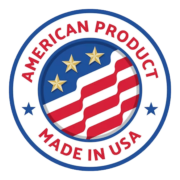GFRP Composite Rebar
GFRP Glass Fiber Reinforced Polymer Rebar
Sustainable, rust-proof alternative to traditional steel reinforcement
GFRP Glass Fiber Reinforced Polymer Rebar is 25% of the weight of steel and has a Specific Tensile Strength that is 2.5 times greater. This equates to enhanced jobsite safety, with significant savings in transportation and handling costs.
GFRP Glass Fiber Reinforced Polymer Rebar is rust- proof and rated for 100+ years of reinforcement in alkaline and acidic environments.
GFRP Glass Fiber Reinforced Polymer Rebar does not conduct electricity, is non-magnetic, does not interfere with RF signals, and is UV Stable.
GFRP Glass Fiber Reinforced Polymer Rebar
Part No.
Description
Size
Mean Cross Sectional Area
Guarenteed Ultimate Tensile Strength
Ultimate Tensile Load
Tensile Modulus of elasticity
Ultimate Strain
SBGFRPCR3
SBGFRPCR4
SBGFRPCR5
Compliance
#3×20’ GFRP Rebar
#4×20’ GFRP Rebar
#5×20’ GFRP Rebar
3/8” 0.108 in2
10mm 69.77 mm2
1/2” 0.189 in2
5/8” 0.300 in2
16mm 193.4 mm
156.6 ksi
1080 MPa
154.4 ksi
111.6 ksi
770 MPa
20.0 kips
89.1 kN
33.5 kips
44.6 kips
198.7 kN
7.03 Msi
48.5 GPa
7.27 Msi
7.63 Msi
52.6 GPa
2.63%
2.4% 1.96%
13mm
121.72 mm2
1065 MPa
149.1 kN
50.1 GPa
All GFRP Glass Fiber Reinforced Polymer Rebar are in compliance with ASTM 7957 and ACI 440-22.
Substantially exceeds all minimum requirements for each category of Acceptance Criteria for ICC-ES 454, FDOT Section 932-3, Fiber Reinforced Polymer (FRP) Bars.
840 South 25th Ave Bellwood, IL 60104 708-493-9569 www.surebuilt-usa.com
04/23
Approvals & Governed Use:
GFRP Glass Fiber Reinforced Polymer Rebar is an approved reinforcement product according to ACI 440R-07 covering Basalt, Glass, Carbon and Aramid FRP’s. It’s used as per ACI 440.1R-06, and its construction use is dictated by Code 440.6-08, and tested according to ASTM D7205, and 5 other ASTM methods; demonstrating GFRP Glass Fiber Reinforced Polymer Rebar exceeds requirements of ACI 440.6-08.
GFRP Glass Fiber Reinforced Polymer Rebar can be placed to meet code requirements (or equivalent) by using the calculations and installation guidelines for GFRP reinforcement of concrete as defined in ACI 440.6- 08. Recommendations for maximum deflection and shear of concrete elements reinforced with FRP rebars are presented in ACI 440.1R-06, and specified by 440.5-08.
The use of GFRP is further approved under the ICC Evaluation Service, Acceptane Criteria for Fiber- Reinforced Polymer (FRP) Bars, for Internal Reinforcement of Concrete Members [AC454] dated June 2016.
ASTM Standards
D570 Standard test method for water absorption of plastics D619 Standard practice for conditioning plastics for testing D695 Standard test method for compressive properties of
rigid plastics
D7205 Standard test method for tensile and tensile modulus D790 Standard test method for flexural properties of
unreinforced and reinforced plastics
D792 Standard test method for density and specific gravity D2734 Void content of reinforced plastics
D3410 Standard test method for compressive properties of
polymer matrix composite materials
Design Manual: Isis Design Manual #3: Reinforcing concrete
structures with fiber reinforced polymers (FRP’s)
Non-Corrosive Benefits
• No added maintenance cost during the service life of the structure, unlike steel and other FRPs.
• Reductions in the overall concrete cover (usually required due to degradation from steel corrosion) can now
be considered.
• Expensive waterproof sealants, coatings and/or special concrete additives are no longer necessary to re-
sist or prevent corrosion.
• Chloride contaminated concrete consituents, such as water (saltwater) and aggregates, as well as chloride-
based accelerators and cement without chloride limits can now be used without detriment.

